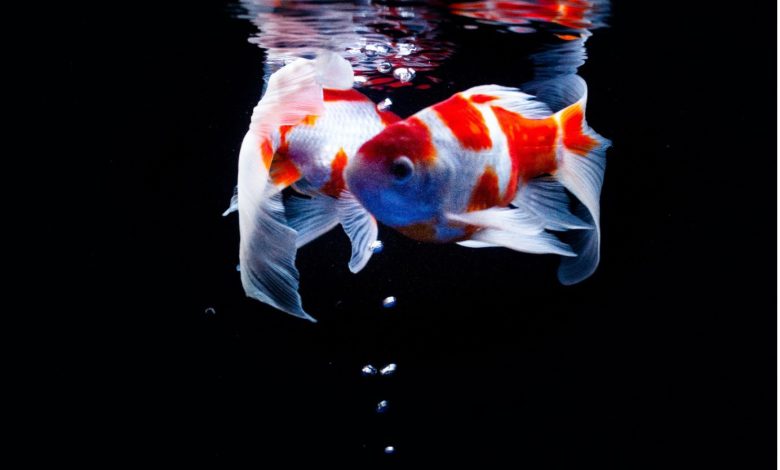Why Gravel or Substrate Is Necessary for an Aquarium: A Complete Guide
Why Gravel or Substrate Is Necessary for an Aquarium

Introduction:
Setting up an aquarium involves various elements, and one crucial component is the gravel or substrate. While it may appear to be purely decorative, gravel or substrate serves several essential functions in creating a healthy and balanced aquatic environment. In this comprehensive guide, we will delve into the reasons why gravel or substrate is necessary for an aquarium. From promoting biological filtration and nutrient cycling to enhancing water clarity and creating a natural habitat, we will explore its significance in maintaining the well-being of your aquatic ecosystem. Additionally, we will provide step-by-step instructions on how to put substrate in your aquarium for optimal results.
- Biological Filtration and Beneficial Bacteria 1.1. Surface Area for Beneficial Bacteria: Gravel or substrate provides a vast surface area for beneficial bacteria to colonize. These bacteria play a crucial role in biological filtration, breaking down harmful ammonia and nitrite into less toxic nitrate.
Nitrification Process: The gravel or substrate acts as a medium for the nitrification process, where beneficial bacteria convert ammonia to nitrite and then nitrite to nitrate. This process helps maintain water quality and prevents the buildup of harmful toxins.
- Nutrient Cycling and Plant Growth 2.1. Root Anchoring and Nutrient Absorption: Gravel or substrate provides a medium for plant roots to anchor themselves and access essential nutrients. Plants derive nutrients from the substrate, promoting healthy growth and contributing to the overall balance of the aquarium ecosystem.
Nutrient Cycling: As plants grow and shed leaves, organic matter accumulates in the substrate. Beneficial bacteria in the substrate break down this organic matter, releasing nutrients back into the water column for plant uptake.
- Mechanical Filtration and Water Clarity 3.1. Suspended Debris Trapping: The gravel or substrate acts as a mechanical filter, trapping debris, uneaten food, and fish waste that may otherwise float freely in the water column. This helps maintain water clarity and reduces the workload on the aquarium’s filtration system.
Preventing Anaerobic Pockets: Properly layered substrate allows water to flow through it, preventing the formation of anaerobic pockets where harmful bacteria can thrive. This promotes a healthier and more stable aquarium environment.
- Aesthetic Enhancement and Natural Environment 4.1. Aquascape Design: Gravel or substrate contributes to the overall aesthetic appeal of the aquarium. It provides a natural-looking and visually pleasing base for plants, rocks, and other decorative elements, allowing you to create beautiful aquascapes.
Mimicking Natural Habitat: Depending on the type of fish and plants in your aquarium, using appropriate gravel or substrate can help recreate the natural habitat of your aquatic inhabitants. This enhances their well-being, comfort, and overall behavior.
- How to Put Substrate in Your Aquarium : Let’s see how to put substrate in your aquarium
Preparing the Aquarium: Before adding substrate, ensure that your aquarium is clean and free from any debris. Remove any existing substrate, decorations, and plants, if necessary.
Choosing the Substrate: Select a substrate suitable for your aquarium setup and the needs of your fish and plants. Consider factors such as grain size, color, and compatibility with your desired aquascape design.
Layering the Substrate: Start by adding a layer of rinsed substrate to the bottom of the aquarium. The depth of the substrate layer will depend on the specific requirements of your aquarium and the plants you intend to keep. Aim for a thickness of around 1-2 inches.
Arranging Decorations: Once the substrate is in place, you can arrange any rocks, driftwood, or other decorations to create a visually appealing layout. Be mindful of creating spaces for fish to swim and ensuring stability for larger decorations.
Adding Water: Slowly pour water into the aquarium, preferably using a plate or dish to avoid disturbing the substrate. Fill the aquarium gradually to minimize cloudiness caused by disturbed substrate particles.
Planting Vegetation: If you have aquatic plants, carefully plant them into the substrate, ensuring their roots are properly covered and anchored. Add more substrate around the plants as needed.
Conclusion:
Enhancing Your Aquarium with Gravel or Substrate Gravel or substrate is not just a decorative element; it plays a vital role in maintaining a healthy and thriving aquarium environment. From facilitating biological filtration and nutrient cycling to promoting water clarity and creating a natural habitat, the inclusion of gravel or substrate is necessary for a successful aquarium setup. By following the step-by-step instructions on how to put substrate in your aquarium, you can create an optimal environment for your aquatic inhabitants to thrive and enjoy their new home.


